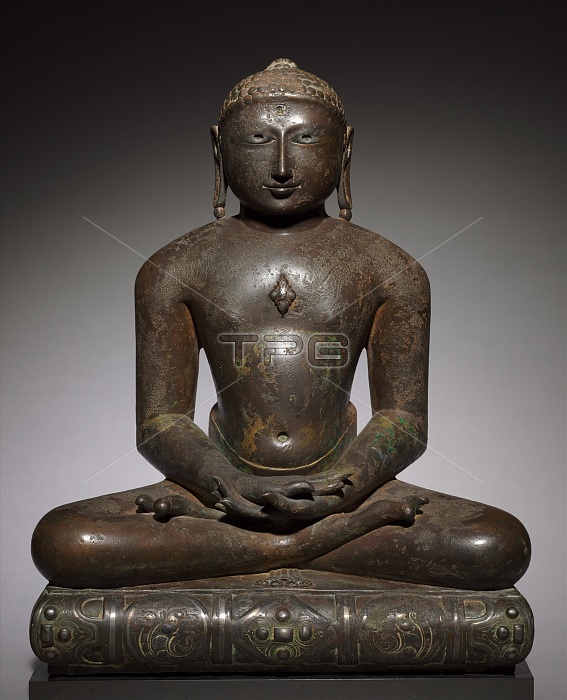
Jina (Tirthankara), 900s-1000s. Jainism was one of the three major religions to evolve in India, the other two being Hinduism and Buddhism. While each religion developed its own particular characteristics, their beliefs maintained a common ground with Hinduism. In both Jainism and Buddhism, deities symbolize enlightened beings whose example is meant to inspire believers in following the path toward salvation rather than worshipping them. In Jainism the most common deities are Jinas (meaning "liberators" or "victors"), also known as Tirthankaras ("holy men"). As the name implies, they are beings "liberated" through enlightenment from the cycle of rebirth. There are 24 of these Jain patriarchs. This sculpture represents one of the 24 Jinas, but the absence of attributes makes it impossible to determine which one. This is not surprising since Jinas tend to look alike. Although this figure wears a cloth around his waist, Jinas are usually shown naked-a reference to their renunciation of worldly goods-and seated cross-legged in the posture of meditation (dhyanasana) with their hands resting in their laps (in the dhyana mudra), palms turned upward. Their physical appearance is always the same: broad shoulders, tapering torso, and long, highly stylized limbs. The head, with its round face and short-cropped curls, has a small protrusion at the top. The facial expression conveys self-assurance, wisdom, and compassion. Such a figure would usually have a halo attached to the back of the head. The present bronze dates to a time when some of the finest Jain sculptures and monuments were produced in India, as documented by such temples as Mt. Abu in Rajasthan (the area where this sculpture originated), Khajuraho in Madhya Pradesh, or Srivana Belgola in Karnataka.
| px | px | dpi | = | cm | x | cm | = | MB |
Details
Creative#:
TOP25282192
Source:
達志影像
Authorization Type:
RM
Release Information:
須由TPG 完整授權
Model Release:
No
Property Release:
No
Right to Privacy:
No
Same folder images:

 Loading
Loading